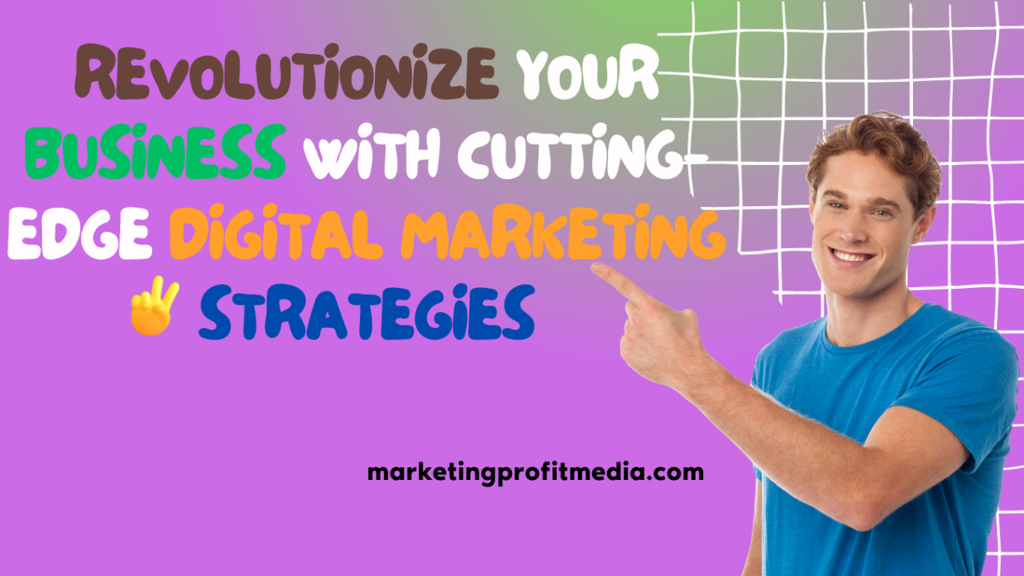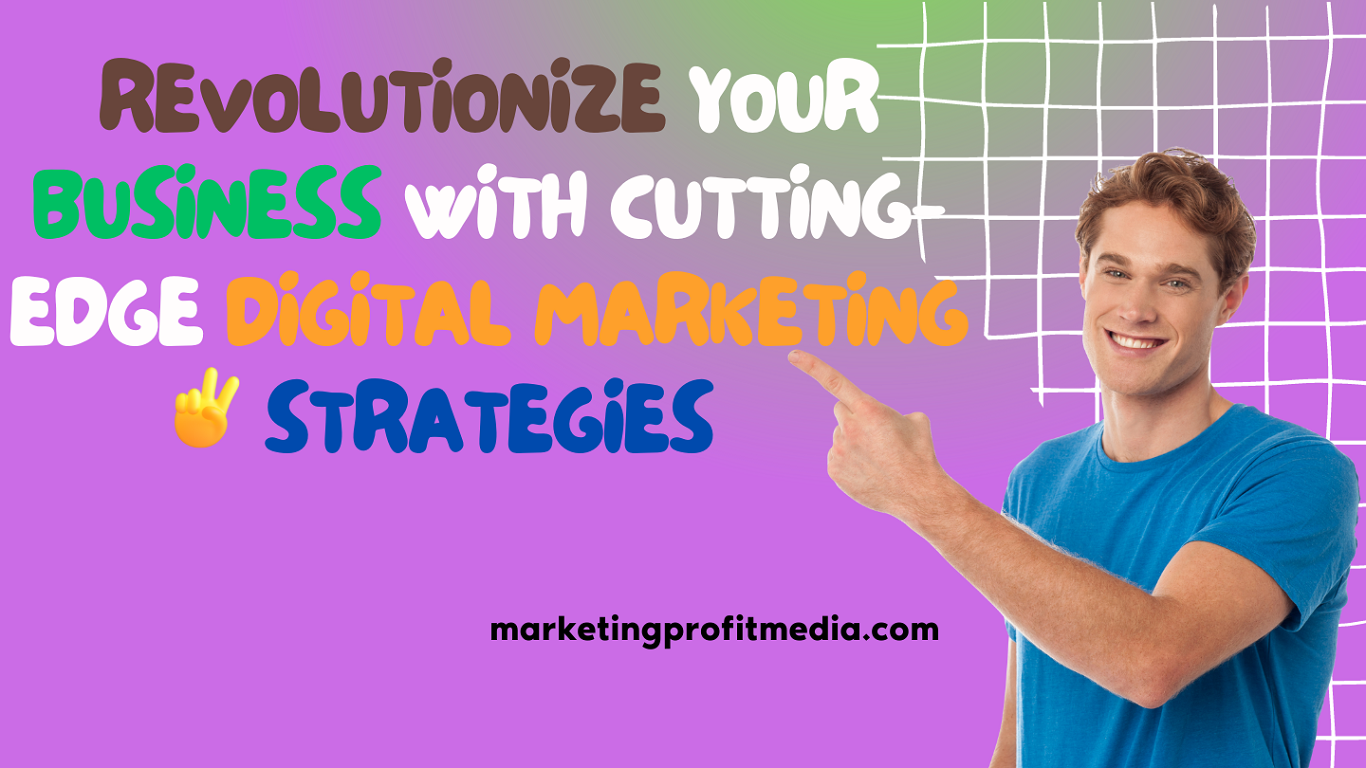A successful firm in today’s volatile environment requires ongoing reinvention. As new forms of Digital marketing strategies have emerged, the older, more static ones have fallen out of favour. In today’s modern world, you may revolutionise your company by adopting new technologies and innovative practices.
My Best Recommended & Proven Way to Make $100 Daily – Watch THIS FREE Training to START >>

We’ll take a deep dive into the dynamic world of digital advertising in this in-depth blog series. The rules of the game have changed, and possibilities exist at the intersection of art, science, and technology like never before. We’ll help you tap into this era’s full potential.
Get ready to delve into the fundamental changes in the marketing industry, comprehend the digital world, and learn to maximise the potential of content marketing, search engine optimisation, social media, email campaigns, and paid advertising. There’s a change on the horizon for your industry; are you prepared to take part in it?
Table of Contents
- What is Digital Marketing?
- The Evolution of Marketing
- Why Digital Marketing Matters
- Understanding the Digital Marketing Landscape
- Content is King: Mastering Content Marketing
- Search Engine Optimization (SEO) Strategies
- Social Media Marketing in the Digital Age
- Email Marketing: The Art of Personalized Engagement
- Paid Advertising: Maximizing ROI with PPC
What is Digital Marketing?
Digital marketing encompasses all marketing efforts that use an electronic device or the internet. This can include a wide range of tactics, from search engine optimization (SEO) to content marketing and social media advertising. The primary goal of digital marketing is to promote brands, build preference, engage with customers, and increase sales through various digital channels and platforms.
The Evolution of Marketing
Marketing has come a long way from billboards, newspaper ads, and TV commercials. Today, it’s all about digital marketing. But why this shift? The simple answer is that consumer behavior has changed. People now spend more time online than ever before. They shop online, seek information online, and even socialize online. If you want to reach your target audience, you need to go where they are – the digital realm.
Why Digital Marketing Matters
Digital marketing matters because it’s highly effective. It allows you to reach a specific audience with pinpoint precision, track your campaigns in real-time, and adjust your strategies accordingly. It’s cost-effective, measurable, and adaptable. It levels the playing field for small businesses, enabling them to compete with industry giants. Now, let’s dive deeper into the world of digital marketing.
Understanding the Digital Marketing Landscape
Defining Digital Marketing
Digital marketing encompasses all marketing efforts that use electronic devices or the internet. It includes various channels, such as search engines, social media, email, and websites, to connect with current and prospective customers.
Key Digital Marketing Channels
- Search Engine Marketing (SEM): This involves using search engines like Google to promote your website by increasing its visibility in search engine results pages (SERPs).
- Social Media Marketing: Leveraging platforms like Facebook, Instagram, and Twitter to engage with your audience.
- Content Marketing: Creating valuable and relevant content to attract and retain a clearly defined audience.
- Email Marketing: Sending tailored emails to your subscribers to promote your products or services.
The Power of Data and Analytics
One of the most significant advantages of digital marketing is the wealth of data it provides. You can track and measure every aspect of your campaigns, from the number of website visitors to the ROI of your Facebook ads. This data-driven approach allows you to refine your strategies continuously, ensuring you get the most bang for your buck.
My Best Recommended & Proven Way to Make $100 Daily – Watch THIS FREE Training to START >>
Content is King: Mastering Content Marketing
Creating High-Quality Content
Creating valuable content is at the heart of content marketing. It should inform, educate, or entertain your audience. Content can come in various forms, including blog posts, videos, infographics, and podcasts. The key is to provide something that your audience finds useful.
Optimizing Content for SEO
Search Engine Optimization (SEO) is the process of making your content search engine-friendly. This involves using the right keywords, optimizing meta tags, and ensuring your website loads quickly. The goal is to improve your content’s chances of appearing on the first page of search results.
Leveraging Social Media for Content Distribution
Once you’ve created valuable content, it’s essential to get it in front of your audience. Social media platforms are perfect for this. You can share your content across various social networks, reaching a broader audience and encouraging shares and engagement.
Case Studies in Content Marketing Success
To illustrate the power of content marketing, let’s look at a few case studies.
HTML Bullet Point List of Case Studies:
- Red Bull: They have mastered content marketing with their extreme sports and adventure-related content, connecting with their audience’s passion for excitement.
- GoPro: Known for user-generated content, GoPro encouraged its customers to share their experiences, creating a sense of community and trust.
- Dollar Shave Club: Their humorous viral video not only entertained but also effectively promoted their product, leading to rapid growth.
Search Engine Optimization (SEO) Strategies
On-Page SEO Best Practices
On-page SEO involves optimizing the elements on your website itself. This includes using relevant keywords, creating high-quality content, optimizing images, and ensuring your site is mobile-friendly.
Off-Page SEO Techniques
Off-page SEO focuses on building your website’s authority and reputation. This is achieved through link building, social media activity, and influencer outreach.
Local SEO for Small Businesses
Local SEO is crucial for small businesses. It helps you appear in local search results when people are looking for products or services in their area. To optimize for local SEO, you’ll need to claim your Google My Business listing, gather reviews, and ensure your NAP (Name, Address, Phone number) is consistent.
The Role of Voice Search in SEO
With the rise of virtual assistants like Siri and Alexa, voice search is becoming increasingly important. Optimizing your content for voice search involves using natural language, answering specific questions, and ensuring your website loads quickly on mobile devices.
Social Media Marketing in the Digital Age
Platform Selection and Target Audience
Not all social media platforms are created equal. You need to choose the platforms that align with your target audience. For instance, if you’re targeting young adults, platforms like Instagram and TikTok might be more effective than LinkedIn.
Creating Engaging Social Media Content
Your social media content should be engaging and shareable. It’s not just about posting pictures of your products but also sharing user-generated content, running contests, and telling your brand’s story.
Paid Advertising on Social Media
Paid advertising on social media can be highly effective in reaching a specific audience. Platforms like Facebook and Instagram allow you to target users based on their demographics, interests, and online behavior.
Influencer Marketing in Social Media
Influencer marketing involves collaborating with individuals who have a significant following on social media. These influencers can help you reach a broader audience and build trust with their followers.
Email Marketing: The Art of Personalized Engagement
Building an Email List
Building an email list is the first step in email marketing. You can collect email addresses through your website, social media, or in-store sign-ups. Offer incentives like discounts or free resources to encourage sign-ups.
Crafting Effective Email Campaigns
Once you have a list, it’s time to craft engaging email campaigns. Personalization is key – use the subscriber’s name, segment your list, and tailor your content to their interests.
Marketing Automation Tools
Marketing automation tools like MailChimp and HubSpot make managing your email campaigns a breeze. You can schedule emails, track opens and clicks, and even trigger automated responses based on subscriber behavior.
Email Marketing Analytics
After sending your emails, it’s essential to analyze their performance. Look at open rates, click-through rates, and conversion rates to understand what’s working and what needs improvement.
My Best Recommended & Proven Way to Make $100 Daily – Watch THIS FREE Training to START >>
Paid Advertising: Maximizing ROI with PPC
Introduction to Pay-Per-Click Advertising
Pay-Per-Click (PPC) advertising allows you to bid on keywords and have your ads displayed at the top of search engine results. You only pay when someone clicks on your ad, making it a cost-effective way to drive traffic.
Google Ads vs. Social Media Ads
Google Ads are perfect for users actively searching for products or services. Social media ads, on the other hand, are more about creating brand awareness and reaching users based on their demographics and interests.
Ad Budget Management
Managing your ad budget is crucial. You can set a daily or monthly budget, and the platform will stop showing your ad once your budget is exhausted. This prevents overspending.
A/B Testing and Conversion Optimization
A/B testing involves creating two versions of an ad or landing page to see which performs better. Use this method to fine-tune your campaigns for maximum ROI.
Conclusion
In the end, digital marketing is like a big playground with lots of different options. In today’s business world, it’s not just a choice; it’s the only way to stay active and competitive. You can keep your business on the cutting edge of new ideas by focusing on content marketing, SEO, social media, email campaigns, and pay-per-click advertising. The trip doesn’t end here; it’s a constant adventure of discovering new things and changing yourself. Your business will only do well if you can find your way around this changing landscape and take advantage of all the chances it offers. We’re living in the digital age, and your business is about to change.
Frequently Asked Questions
1. What is the cost of entry for digital marketing?
- The cost of entry varies based on the specific strategies you choose. Content marketing and social media can be relatively low-cost, while paid advertising may require a more significant budget.
2. How long does it take to see results with SEO?
- SEO is a long-term strategy. It can take several months to start seeing significant results, but the investment is well worth it in the long run.
3. Are there any free tools for email marketing?
- Yes, many email marketing platforms offer free plans for smaller subscriber lists. MailChimp and SendinBlue are good options to start with.
4. What’s the difference between organic and paid social media reach?
- Organic reach refers to the number of people who see your content without paid promotion. Paid reach involves using advertising to expand your content’s visibility.
5. How can I measure the success of my digital marketing efforts?
- You can measure success through various key performance indicators (KPIs) like website traffic, conversion rates, click-through rates, and return on investment (ROI).
My Best Recommended & Proven Way to Make $100 Daily – Watch THIS FREE Training to START >>
Thanks for reading my article on “CPA Marketing Made Easy: How to Generate Passive Income From the Comfort of Your Home“, hope it will help














